Installing Windows on an Xbox One APU: The Chuwi Aerobox Review
by Dr. Ian Cutress on December 24, 2020 9:45 AM ESTCPU Benchmarks, Power, Temperature, Noise
For office productivity, there’s no getting around the fact that these are Jaguar cores. Coupled with the memory bandwidth means that flicking between the basic documents can be somewhat laggy, and this isn’t really a system for anything other than email and web browsing. We still put it through our test suite, and the full range of tests were conducted. A few of them are highlighted here.
For reference, the Athlon 5370 mentioned here is a quad-core Jaguar.
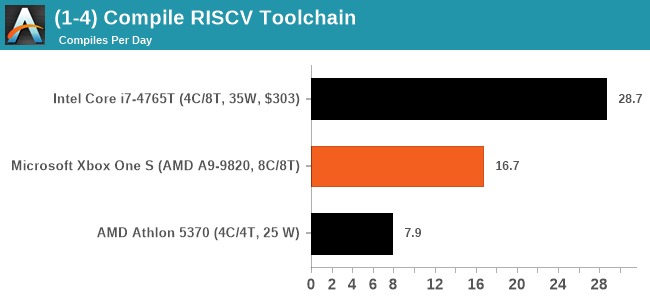
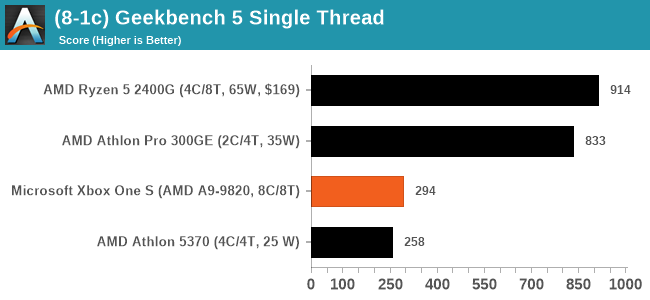

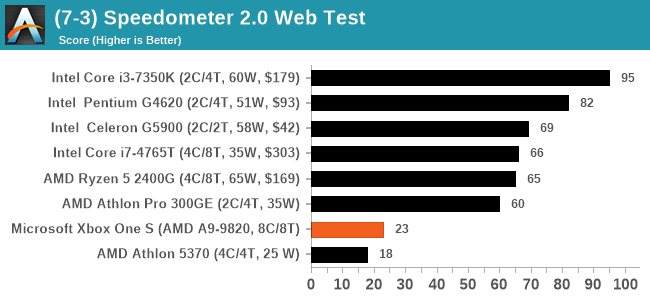
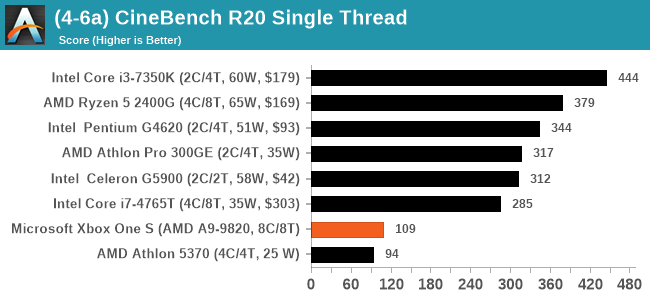
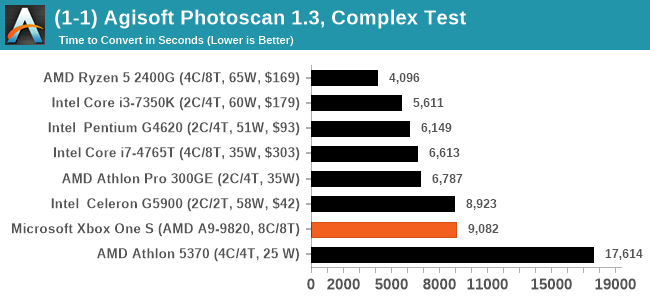

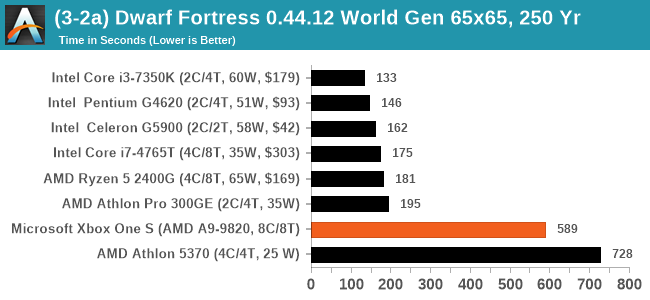

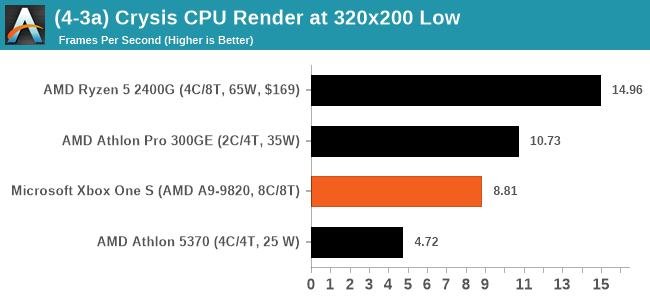
Power, Temperatures, Noise
I will say a few words on power and temperatures.
Our normal tools for extracting power do not work on this embedded processor, likely a function of its age (similar Jaguar desktop processors that were public have the same issue), however we were able to take some wall measurements.
At idle, we saw power consumption in the 65-70W range. This is fairly high for a HTPC, so we would suggest not leaving it turned on when not in use. During our Borderlands 3 gaming, the system power hit 150 W, which should actually be clipping the power supply that is only capable of 150 W. This may be a limiting factor in gaming performance as a result. During high CPU loading, the total system power only went up to 85 W or so, showcasing that the GPU is the key component here.
For temperatures, before we replaced the paste, the system would peak at 75ºC regardless of load, and still offer full CPU frequency. After applying our own paste, that dropped to the 62-68ºC range. All throughout, the fan on the cooler never ramped up enough to be noticeable at a distance of a couple of meters. The one time the system had an odd boot, the fan did spin to 100% and was very loud, but after rebooting it came back as normal.










101 Comments
View All Comments
Oxford Guy - Friday, December 25, 2020 - link
Don’t forget Sony, the company that advertised the ability to run Linux on the PS3 to sell them and then yanked away the ability. Then, in court, the company tried to call the plaintiffs bad apple ‘nobodies’. The company argued that ‘no one’ had any interest in running Linux on the machines — of course after the military among others did exactly that. A relentless patterns of bad faith from a corporation? Perish the thought.osx86h3avy - Saturday, December 26, 2020 - link
My understanding was allowing Linux was a knee jerkmreaction to the og Xbox being hacked to run Linux et al,and Sony was like "pfft, yall want it we will give it to ya" in a sort of bad faith way originally.....not that it makes it ok to then drop support later like they did but it always struck me as more of a fu to m$ than serious consideration for the communityOxford Guy - Saturday, December 26, 2020 - link
Sony chose to make effort to advertise the feature. It wasn't just listed in small print.Sony then pulled a bait and switch. I think I heard the suggestion that it was done as a way to protect BluRay discs from being ripped. Regardless of the reason, Sony had no legal or ethical way to cut a feature out of the product it had sold to people. It's like the scandal of e-book providers reaching into your device to delete books you purchased.
Lord of the Bored - Saturday, December 26, 2020 - link
To my recollection, it was for tax purposes. It let them call it a computer rather than a game console in some regions.Rookierookie - Saturday, December 26, 2020 - link
Microsoft obviously doesn't want to affect the Windows PC market.Sony, though, I don't know. They sell PCs, yes, but I don't know if VAIO is big enough that Sony would actually be harmed if they enabled the capability on their consoles. They've also done something similar before, by making the PS2 a DVD player as well.
Oxford Guy - Saturday, December 26, 2020 - link
Microsoft obviously wants to have its cake (a "console" it can make money on) and eat it, too (Windows PC gaming).Too bad the public isn't smart enough to say no and demand a common software layer (Vulkan + OpenGL) to go with the common hardware layer (x86).
Alexvrb - Friday, December 25, 2020 - link
This would have made *SOME* sense if it was released years ago and used faster DDR3 in a quad channel configuration like the consoles themselves. Even better if they had worked with AMD to enable the eSRAM but that's a long shot for a niche APU. The actual configuration used is just awful for anything other than dumping old stock of DDR3.At least we are finally seeing a similar cache used to good effect on PC with the RX 6000 series.
eastcoast_pete - Friday, December 25, 2020 - link
Now I know they aren't really directly comparable, but how much better or faster is this setup when compared with, let's say, a Snapdragon 865+ based gaming smartphone like the Asus ROG III? Is there a way to run Aztec Ruins or whatever on this Chuwi box, just to get an idea? My strong suspicion is that the gaming smartphone will actually hold its own.B3an - Saturday, December 26, 2020 - link
I've love to see this compared to high-end phone SoC's from the last few years. I've been saying all this time that they've been faster than the base XO console for a long time now.lmcd - Monday, December 28, 2020 - link
The SRAM cache enables nearly double the memory bandwidth in scenarios that are apparently very important and/or very common, so it's not a small thing to gloss over. And likewise this isn't a platform Windows is at all optimized for. I agree that in CPU-bottlenecked scenarios you're clearly right but it's pretty easy to push a videogame toward GPU-bottlenecked imo.